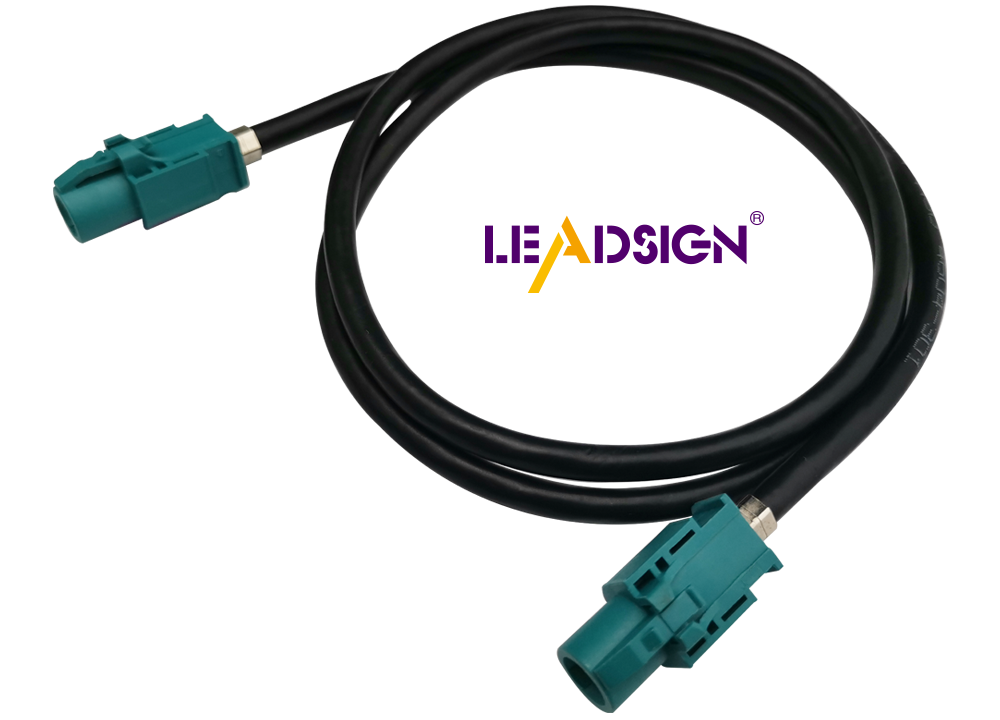Integrating HSD Cables in Automotive Wire Networks

HSD cables play a crucial role in modern vehicles, facilitating rapid data transmission essential for advanced automotive systems. As connectivity in cars increases, the market for automotive wire, including auto wire, is expanding rapidly. ADAS technology also relies on these wires for development. HSD cables effectively connect infotainment systems and sensors, enhancing vehicle safety and performance. The market for automotive data cables is projected to reach USD 10,082.65 million by 2028, highlighting the significance of HSD cables in the automotive industry.
Understanding HSD Cables
What are HSD Cables?
Definition and Characteristics
HSD cables have a 100 Ω shielded system. This stops interference from other signals. The cables handle low-voltage signals well.
Types of HSD Cables
Cars use two main kinds of HSD cables. Shielded twisted-pair ones block electromagnetic noise. Unshielded twisted-pair ones are cheaper for easy tasks. Both types work in cars, like with cameras and USBs.
Key Features
High-Speed Data Transmission
HSD cables are great for fast data sending. They support up to 6 GHz connections. This makes them good for complex signals. Cars need this speed for music and maps.
Durability and Reliability
HSD cables are tough and last long in cars. Their strong design keeps them working well. They are important for car safety and work right every time.
Specifications of HSD Cables
Technical Details
Speed and Bandwidth
HSD cables send data very fast. They work with up to 6 GHz signals. This helps cars share data quickly. The cables link music systems, cameras, and sensors. High bandwidth means smooth video and music. Quick data moves help maps and talking.
Materials Used
HSD cables are made from good stuff. They have a 100 Ω shielded system. This stops outside noise from messing things up. Twisted-pair quad cables are strong and last long. They can handle tough car conditions. Good materials make them last longer.
Rules and Standards
Industry Rules
HSD cables follow strict rules for cars. They meet safety standards for vehicles. These rules make sure they work well in cars. Following rules means they fit with many systems. HSD connectors keep electronic parts connected safely.
Certification Needs
HSD cables pass tough tests to get certified. Tests check if they are good and reliable. Certified cables meet world car needs. Certification shows they work for smart driving tools. Strong links help keep cars safe and working right.
Integration Process
Planning and Design
Start with a clear plan for using HSD cables in cars. Engineers must know what each car system needs. They pick the right HSD cable for each job. They think about speed, strength, and weather. Good planning helps data move fast and systems work well.
Installation Techniques
Putting in HSD cables needs care. Follow the maker's rules to make them work best. Tight connections stop data problems. Be gentle with cables to keep them safe. Use the right tools so they do their job well. Good setup makes car wires last long.
Challenges and Solutions
Common Integration Issues
Problems can happen when adding HSD cables. Other electronics can mess up data flow. Rough handling might break cables. Wrong connectors can stop things from working right.
Mitigation Strategies
Smart ways can fix these problems. Shields cut down on outside noise messing things up. Checking often finds damage early on. Right connectors fit together smoothly. Training helps workers install better. These steps make car wires more reliable.
HSD cables send sound and video in cars. They help with fast links. These links give clear sound and pictures. You get smooth fun while driving. HSD cables join screens to speakers. This makes media play well.
HSD cables boost car connections. They link things like Bluetooth and USB ports. This makes one big system. You can connect phones easily. HSD cables make sure data moves well between gadgets.
HSD cables are key for ADAS in cars. They join sensors to the main system. This lets data move fast in real-time. You get good sensor info for safety features like lane-keeping.
HSD cables help with data work in ADAS too. They send lots of data quickly, which is important for quick choices on the road. HSD cables keep sensors talking to processors well, making ADAS work better overall.
HSD cables are great for car systems. They send data fast and connect well. HSD cables make music and safety features better in cars. Future car wiring will use smarter HSD cables. Engineers will create better systems with them. People will want strong and good wires more. HSD cables will be important for new car technology.
See Also
The Significance of HSD Connectors in Automotive Sector
The Benefits of HSD Connectors in Auto Systems
The Fundamentals of HSD Connectors in Auto Sector
The Benefits of HSD Connectors in Auto Entertainment Systems

